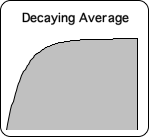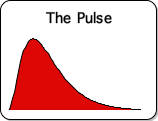Number String Data Streams can contain Non-Quantifiable Information
In prior articles we derived some important Number String Theorems. What relevance do these theorems have? Why are they important? What are the implications?
Number String Data Streams consist of identical elements, numerical or non-numerical.
Before getting started, let us note that these theorems don't apply to every data stream. They only apply to Number String Data Streams, a small subset of the entire set of data streams. Number String Data Streams are notable in that they consist of identical elements. These identical elements can be numbers, as the name implies. For instance, a Number String Data Stream can consist of a string of 0s, 1s, 5s, or any other number. As we shall see, a Number String Data Stream can also consist of non-numerical information, even though the name suggests otherwise. For instance, a Number String Data Stream can consist of a string of information consisting of blue, hard, bitter, anger or just about any other type of non-numerical information that we've invested with meaning.

While emerging from numerical information, Meaning tends to be non-numerical.
Although meaning frequently emerges from numerical information, it tends to be non-numerical in nature. For instance, the leap from electromagnetic wavelengths to the perception of a rainbow's magnificence is non-numerical.
![]()
In fact, the ability of living systems to invest numbers with non-numerical meaning is one of the primary miracles associated with Life. Although Matter reacts to information, it doesn't invest it with any of the emergent characteristics associated with meaning. As examples, color, sound, taste and even emotional content have a material basis based in some type of quantification, such as the amount of biochemicals in our system.
![]()
However, living systems must invest this numerical information with meaning for it to have any relevance. In prior papers, we developed the notion that Life has 2 components, Mind and Body. We suggest that Life employs Mind's mental energy to invest information with relevant meaning.
![]()
Primary Meaning associated with Fulfilling Potentials, for instance Survival
Relevance for most living systems is related to fulfilling potentials, such as survival. We will refer to this as primary meaning.

Secondary Meaning: Beauty, Music, Delicious Flavors, Rage & Joy are non-quantifiable.
Humans, at least, have the ability to invest this primary meaning with secondary and tertiary meanings. For example, we regularly translate sound into the experience of music, color into beauty, taste to delicious flavors, and experience to rage and joy. Although each of these examples emerges from numerical information, these common everyday experiences are non-quantifiable.

Purpose of paper to show that Living Algorithm can deal with Non-quantifiable Information
Indeed, these regular features of human existance have resisted scientific investigation due to our inability to quantify them. The purpose of this paper is show that the Living Algorithm, although a purely mathematical process, has the capacity to deal with both numerical and non-numerical information in a limited, yet significant, fashion.

• General Expressions for 1st & 2nd derivative of Number String Data Stream
Below left is the general expression (Eq. E10) for the Living Average, the 1st derivative (XN bar), of any point in the Number String data stream. This is Theorem E, the formula for the Number String's Living Average. Below right is the general expression (Eq. F12) for the Directional, the 2nd derivative (XN arrow), of any point in the Number String data stream. This is Theorem F, the formula for the Number String's Directional. What do these theorems reveal?
![]()
![]()
1st & 2nd Derivative = A (the data stream) * Constant
The expressions to the right of the A in both equations are constants. The reasoning is straightforward. Both expressions consist solely of Ks, Ds and integers. D, the Decay Factor, is a constant and K, the Scaling Factor, is a function of D, hence a constant also. The relationship between A, the data, and these constant expressions is equally straightforward. A, the Number String's Data, is a multiplier. These relationships are shown in the above algebraic expressions.
A, the Number String's Content, magnifies or shrinks the Active Pulse, a Prototype.
What does this mean? When A equals 1, the data stream is the classic data stream of 1s that generates the Pulse of Attention, a.k.a. the Creative Pulse, and the Triple Pulse's Active Pulse. If we plotted the number pairs consisting of N and the 2nd derivative, the Active Pulse is the result. If A, the identical elements of the data stream, is greater than 1 (A>1), it magnifies the proportions of the Active Pulse. If A is between 0 and 1, i.e. less than 1 and greater than 0 (0<A<1), then it shrinks the Active Pulse's proportions. As such, the Active Pulse can be employed as a prototype for every Number String where A is a positive number. This analysis also holds true of the Living Average.
Living Average & Pulse graphs, prototypes for all graphs


In other words, when the Living Algorithm digests a Number String data stream, the graphs at the right are the result no matter what A consists of. The Living Average graph is a visualization of the Living Average, XN bar, of any number string, not just 1. The bottom graph, the Pulse, is a visualization of the Directional, XN arrow, of any number string, not just 1. In other words, A's content has nothing whatsoever to do with the shape of these graphs. A's content doesn't stretch the contours of these graphs in any way. It doesn't render them broader, narrower, longer, or shorter. A's content determines the values of the vertical y-axis. That is all. This is why we left the values off the graphs. A is like a magnifying glass. It determines the size, but not the shape. Just like a magnifying glass, A does not exert any influence upon the interaction.
The Living Algorithm can digest Non-numerical Information, Quality without Quantity
Due to this unusual feature, the Living Algorithm can effectively deal with non-numerical information, even though the non-numerical information is a factor in the equation. In other words, the non-numerical information is independent of the calculations. This property of the Living Algorithm is very important in that it allows the Living Algorithm to digest non-numerical information. For instance, when the Living Algorithm digests the color blue, independent of its frequency, blue exhibits a Pulse that can be interrupted.
The Living Algorithm can digest emotional states.
The implications are broad. If Life employs the Living Algorithm as a computational tool, non-numerical information, such as emotional states, can be digested. In other words, quantification is not an essential ingredient in this mathematical process. This allows the Living Algorithm to digest information that has quality without quantity. The contours of the Active Pulse, Living Average, and Liminals remain the same. The only difference is the quality of data stream. If A is large it acts as a magnifier and vice versa. If A is an emotion, it exhibits a pulse based solely upon the Living Algorithm's digestion process.
Living Algorithm reveals trajectories. Attention attracted to significant trajectories.
Remember the Living Algorithm's process reveals the rates of change (the derivatives) of the information flow. Hence this process could reveal the trajectories of an emotional state. Further data stream derivatives attract the mental energy of Attention. As such, understanding Living Algorithm mathematics could reveal the interactive patterns between Attention (mental energy) and an emotional state (a Number String data stream that consists of a single emotion).
Implications of Theorem I
These Number String Theorems have some very important implications. Let's start our investigation by examining what Theorem I has to tell us. In the Biology of Sleep article, we saw that each element in a data stream can be viewed as a bundle of information. When these information bundles enter the Living Algorithm System, they work to change the Living Average to their side. As an example, when a '1' enters the System, it attempts to change the Living Average, the state of the System, to 1. Because they do the work of changing the System from one state to another, these information bundles can be viewed as info energy.

When the Living Average, the System's state, equals the value of the information bundle, no more work is done. In other words, the data byte has completed its task of changing the Living Average to its side.

A data stream's information bundles can differ. However, each of the information bundles in a Number String Data Stream is identical. As such, even though a Number String Data Stream is composed of discrete elements, it has only one value. When a data stream's information varies, each of the information bundles has a different agenda. In contrast, the Number String's identical information bundles have the same goal. In this sense, it could be said that the Number String's sole goal is to change the System's state to its value. When the Number String has changed the System's state to its value, no more work is done.

Restating Theorem I: as N, the number of Living Algorithm iterations, increases, the Living Average approaches the Number String's value. Our classic Living Average graph illustrates this progress. N is represented on the horizontal X-axis, small on the left and large on the right. The vertical y-axis represents the Living Average, the System's state. When we begin the Living Algorithm process, the Living Average is one value. As N increases (moving to the right), the Living Average gradually approaches the Number String's value. By the end of the process the Living Average equals the Number String's value.
Note that the progress is quick at the beginning of the process and slow at the end. In other words, more work is done in the beginning, while only a negligible amount of work is accomplished at the end of the process. Note that the Living Average approaches the Number String's value forever, never quite reaching it. However for practical purposes, we can say that the Number String's work is finished by the end of this graph.
The entire process applies to non-numerical, as well as numerical, information. The System begins in one state. When the Living Algorithm digests the Number String's content, whether numerical or non-numerical, it changes the System's state to the Number String's content – Theorem I. This content could be a numerical value, a color, an emotional state, or a concentrated experience of any kind. Basically the Living Algorithm process changes the System's state from one information state to another. This process is not instantaneous, but occurs over time. Further, this transformation process requires concentrated information in the form of a Number String Data STream, where the information doesn't need to be quantifiable.
As is evident from the graph, only a negligible amount of work is accomplished after a certain point in the Living Algorithm process. As such, the work of changing the System's state is complete after a discrete period of time, at least for practical purposes. After a point, the energy of the information bundles is spent maintaining the System's state without doing any actual work. In other words, if the Number String Data Stream goes on for too long, the System is just spinning wheels without going anywhere. We will uncover other drawbacks of this stagnation, when we examine the implications of Theorem J in the next section.